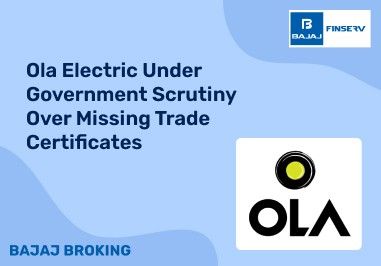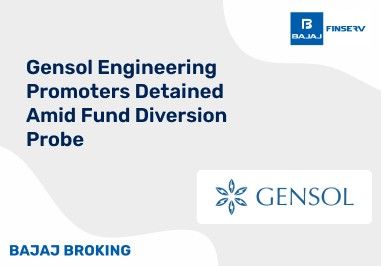An ETF, or Exchange-Traded Funds, is a versatile tool for investments in various goals and preferences. It pools together investor money for investment in any asset like stocks, bonds, commodities, among others. These are traded on the stock exchange, allowing them to have the benefits of stocks with the flexibility of a mutual fund in terms of diversification.
Some of the common types are Equity ETFs, Fixed-Income ETFs, Commodity ETFs, and many more. Most of them are specially created to meet some specific objective for an investment strategy. Having this understanding, individuals are better able to choose the suitable ETFs to meet their own risk and financial needs.
What is ETF?
An Exchange Traded Fund is essentially tracking an index, a sector, commodity, or an asset class and comes in as a form of financial instrument. It has the benefits of both mutual funds and stocks since it offers diversification in the form of a basket of assets and is traded like individual shares on the exchanges.
The ETF can follow the indices such as Nifty 50. Investors will have exposure to top companies without having to buy the individual stocks. They are mostly passively managed, thus reducing expense ratios and saving on cost. They are best suited for the novice and seasoned investor alike because ETFs give easy access, transparency, and an unbelievable array of investment options. Now that we know what is ETF, let's move onto its types.
What are the Different Types of ETFs?
There are numerous types of Exchange-Traded Funds (ETFs) that cater to diverse investor needs, risk tolerances, and financial goals. In this paper, the most popular categories of ETFs, including their unique features, advantages, and investment purposes, will be explained.
1. Equity ETFs
Equity ETFs invest in stocks and track the performance of a particular equity index, like Nifty 50 or S&P 500. This is an excellent choice for a long-term investor who wants capital growth and gets the exposure to a diversified portfolio of equities. There are broad markets, specific sectors (like technology or healthcare), or particular investment themes (such as ESG or value investing) equity ETFs.
The equity ETFs are traded on a stock exchange with very good liquidity in continuous trading sessions. The price is also generated in real-time. Equities ETFs advantageously keep the expense ratio lower as compared to that of actively managed equity funds.
2. Fixed-Income ETFs
Fixed-income ETFs invest in bonds and other forms of fixed-income securities, providing an income of fixed amount and predictability. These ETFs track bond indices, which may consist of government treasuries, municipal bonds, corporate bonds, or high-yield bonds. These are ideal for conservative investors who seek low-risk investment options and stability in the portfolio.
Fixed-Income ETFs diversify by investing in a wide range of bonds that can help reduce the risk of defaults from individual bonds. Moreover, they are relatively more liquid than conventional bonds because they can be purchased and sold on stock exchanges in the course of the market days. This feature of liquidity has made them attractive to income-focused investors who crave flexibility.
3. Commodity ETFs
Commodity ETFs enable investors to gain exposure to the physical commodity, be it gold, silver, crude oil, or agricultural products. They are typically used as an inflation hedge and for portfolio diversification. There are three types of commodity ETFs, which include physical-backed, such as gold ETF, which holds actual gold, futures-backed, which entails tracking commodity futures contracts, and equity-backed, which entails investing in shares of firms that are directly related to commodities.
In this case, Commodity ETF simplifies the investment process, saving investors on storage costs, transportation costs, as well as insurance costs of commodities. Furthermore, an investor can invest in a commodity without going directly to complex markets like futures trade.
4. Currency ETFs
Currency ETFs track the performance of a single currency, such as the US Dollar or Euro, or a basket of currencies. They can be useful for investors seeking to hedge against currency risk or speculate on exchange rate movements. They can also be used as a means of diversification for portfolios that are highly dependent on a single currency, such as the Indian Rupee.
For instance, US Dollar ETFs can cushion Indian investors against unfavorable currency moves while investing in overseas markets. Currency ETFs are highly liquid also since they trade like equities, thereby being very accessible to both retail and institutional investors.
5. Real Estate Investment Trust (REIT) ETFs
REIT ETFs will invest in the real estate investment trust; a firm which owns, operates, or finances income-generating real estate property. These ETFs allow investors a smooth entry into the real estate market without necessarily having to possess property. REIT ETFs are fantastic income-generating investments because they have to disburse a sizable chunk of their profits to their shareholders in the form of dividends.
Moreover, this investment allows for diversification as one is investing in different kinds of real estates, including commercial, residential, and industrial. Liquidity is on the side of investors as the REIT ETFs are traded on exchanges and property investments are essentially illiquid.
6. Multi-Asset ETFs
Multi-Asset ETFs bring together a variety of asset classes into one single fund, combining equities, bonds, and commodities. They are often meant to offer a balanced approach to investing by spreading investment across a variety of asset types. Multi-asset ETFs are fantastic as it helps minimize the risk of overreliance on a single asset class and is really good for growth-and-stability-seeking investors. This fund is apt for people with a moderate risk level and helps achieve long-term financial goals by taking the diversified investment approach.
7. Alternatives ETFs
The Alternative ETFs are invested in non traditional assets. That includes private equity, hedge funds, or infrastructure projects. These funds are often targeted towards sophisticated investors wanting to diversify beyond simple stocks and bonds. Many alternative ETFs attempt to provide returns decoupled from general market returns, thus acting as a hedge against general market volatility.
However, there are heightened risks and expense ratios for the increased complexities involved with managing alternative assets. They are increasingly becoming popular since they unlock otherwise inaccessible investment opportunities for the retail investor.
8. Sustainable ETFs
Also referred to as ESG: Environmental, Social, and Governance, sustainable ETFs seek companies that meet specific thresholds for sustainability. Products capture the social investing group focused on aligning investments with one's values in addition to earnings. Frequently, sustainable ETFs will concentrate on negative screens like avoiding companies based on fossil fuel and tobacco but concentrate on renewable energies, clean technologies, and ethical business practices.
They offer a chance to invest in forward-looking companies that will address climate change and other global problems. As interest in sustainable investing continues to grow, so too are sustainable ETFs becoming an important long-term investment option.
Additional Read: What is ETF Stock?
Which is the Best ETF for Me?
Best ETF depends upon your financial objectives, the risk tolerance and horizon. For long term growth Equity ETFs may track some indices like the Nifty 50. If you are stable, income-conscious, Fixed-Income ETFs will be more of your cup of tea. Commodity ETF or REIT ETF brings diversification into other asset classes for investment.
Sustainable and socially responsible investors may prefer to choose a Sustainable ETF. Expense ratios and historical performance need to be evaluated while choosing the right and aligned-to-your-financial-goals ETF.
How to Invest in ETFs?
One of the easy and effective strategies for diversifying a portfolio to achieve financial goals is through investing in ETFs. Here's an extended step-by-step guide on how to get started investing in ETFs.
1. Open a Demat account and Trading account
ETF investing begins with Trading & Demat account opening with a reliable broker, such as Bajaj Broking. All units of the ETF will be held in its demat account, and the entity is capable of purchasing and selling ETFs from stock exchanges through the trading account. There needs to be adequate brokerage for the investor that may afford, provide, and provide numerous and varied ETFs trades done throughout all exchanges.
2. Research ETF Options
Spend time looking into each of the various kinds of available ETFs in the market. This includes equity and fixed-income ETFs as well as commodity and currency ETFs. Underlying assets, past performance, expense ratios, and liquidity of the ETF are to be concentrated. Lower expense ratios ensure higher net return, and good liquidity allows you to enter or exit the fund very easily. Search for ETFs that best fit your investment goal and risk appetite: broad market for general exposure or sector-specific in the case of targeted investments.
3. Analyze Your Financial Objectives
The investment objectives clearly define what is hoped to be gained from an ETF investment. Is it long-term growth, steady income, diversification, or inflation protection? Equity for those that have growth-oriented goals; fixed income for seeking income; commodity, which can be coupled with a hedging-inflation product. Moreover, ensure that the selected ETFs suit your overall financial plan and asset allocation strategy.
Step 4: Make an Order
Log in to your trading account and search for the chosen right ETF either by its name or ticker symbol. A market order allows you to buy at prevailing prices or, as you prefer, with a limit order that would lock in your desired price at which to buy. Check on the details of the transaction carefully before executing an order so that it is in step with your intended investment.
5. Monitor Performance Often
The investing does not end with the purchase. Track your ETF over time and observe how it is performing against your expectations and the market. Review the underlying index or assets that the ETF tracks because any change in their performance will directly affect your returns. Make use of the resources available from your broker to obtain current intelligence regarding market conditions and trends in ETFs.
6. Revise and Rebalance Your Portfolio
Over time, your ETFs' value will change, and this can make your portfolio deviate from your target asset allocation. Periodically rebalance the portfolio by buying or selling ETFs to attain the desired balance between asset classes. This helps to rebalance your investments according to your financial goals and risk tolerance during the volatile periods of the market. In fact, following the above-mentioned steps would allow you to confidently invest in ETFs so as to enjoy efficiency, flexibility, and diversification in order to create a well-rounded and sound portfolio.
Conclusion
They range from all equity and fixed-income-type funds to alternative and then sustainable options. The product is versatile, diversified, and cost-effective, which all makes it a vital vehicle in any portfolio. However, selecting the right ETF really depends on its type as well as its purpose concerning your financial goals. When they are selected with the use of proper research and then strategy, ETFs help fulfill investment objectives easily.
Disclaimer: Investments in the securities market are subject to market risk, read all related documents carefully before investing.
This content is for educational purposes only. Securities quoted are exemplary and not recommendatory.
For All Disclaimers Click Here: https://bit.ly/3Tcsfuc













